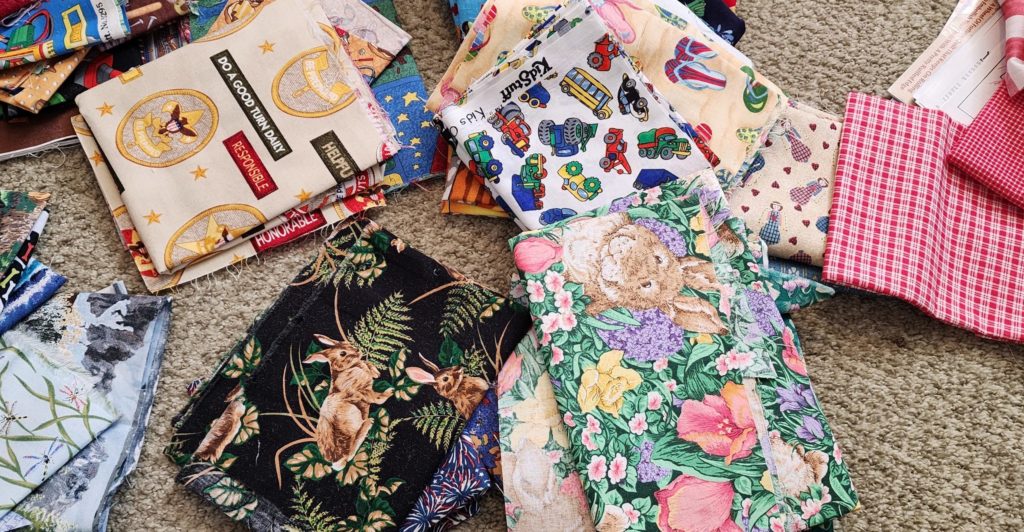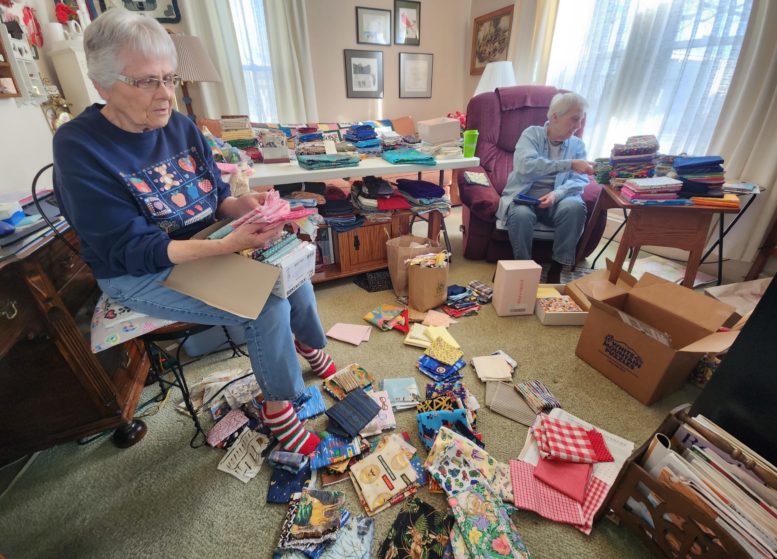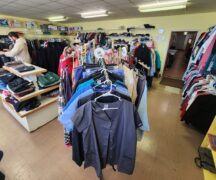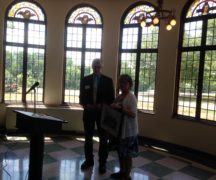By JAN LARSON McLAUGHLIN
BG Independent News
Surrounded by swatches of plaids, paisleys, prints of puppies and pansies, the two seasoned quilters sorted the material.
Entrusted by 93-year-old Alta Codding, a fellow Black Swamp Quilters Guild member, the material was being meticulously matched up with similar squares to be sold later this month.
Like all good quilters, Codding hadn’t discarded scraps for decades – since there is always a chance those blocks would be perfect for a future quilting project.
“It looks like a mess right now – but we’ll get it together,” said Carol Ballard, as she and fellow quilter Sandy Lepper looked around Ballard’s Bowling Green living room, which is being used as the staging place for sorting the quilt materials.
The sale of the quilt blocks will be held Saturday, Feb. 18, from 9 a.m. to 3 p.m., in the fellowship hall of First Presbyterian Church, 126. S. Church St., Bowling Green. Only cash will be accepted for sales.
According to Codding’s wishes, all the proceeds will go to the church where she and her family have been members for decades.
Codding came by quilting quite naturally, with her mother working as a dressmaker in the 1920s, prior to her marriage. She would travel and live with families for a week or so, sewing clothing for them.
As a child, Alta Codding reinforced her sewing skills in 4-H, then became accomplished at needlepoint, quilting and making the occasional prom dress.

Codding believes her quilting days may be done. But like any serious quilter, she knows there could be a lot of life left in the unused quilt pieces squirreled away over the years.
Prolific quilters find out after a few years that they have saturated their family members with their quilting handiwork, both Ballard and Lepper agreed.
“Once they’ve loaded their families with quilts, they need other outlets,” Lepper said.
Many then begin donating their work to local organizations that could use some comforting quilts, like The Cocoon, Children’s Resource Center, hospitals, cancer facilities, veterans groups and the Linus Project.
“Most of us make things, then find places they fit,” Ballard said.
Ballard has bestowed quilts on her grandchildren, and Lepper to her “fur-babies.”
“I cleaned out my denim stash and made quilts for the boys,” Ballard recalled.
Committed quilters look for places beyond beds for their fabric art. There are “quillows” for pillows, seat cushions, sweatshirts, and couch quilts. With newer technology, images from photos can be transferred onto fabric.
“Once wall-hanging came into place, a lot of us made those for gifts,” Ballard said.
“Sometimes quilts become things like dog beds,” Lepper said.
Productive quilters cannot pinpoint the number of quilts they have created.
“I don’t keep track,” Lepper said.
The quilt pattern options seem endless. There’s the common “log cabin,” with each square having a red center to represent a home’s hearth. There’s “grandmother’s flower garden,” “cherry basket,” “tree of life,” “drunken sailor,” and “mariner’s compass.”
“That’s a tough one. You have to have been quilting for a while to do that,” Ballard said of the “mariner’s compass.”
Quilting takes patience, persistence, and sewing skills – though the skill levels vary greatly in the 125-member Black Swamp Quilting Guild which meets monthly in Bowling Green.
Some “purists” use only “rocker stitches” by hand, while others have no qualms about speeding up the process with sewing machines.
“We have people who do very precise tiny things, and we have people who do it slapdash,” Lepper said.
“I consider myself a utilitarian quilter,” Ballard said. “I do something you can use – not just look at.”
Lepper sees herself as a “hodge-podge quilter.” She was first exposed to quilting as a child when her grandma would take down the dining room table and put up the quilting frame.
“I sat under it and watched them stitch,” Lepper said. “I tried it one time and she took my stitches out.”
When living with a quilter, there are sometimes negotiations that must take place.
“We laugh about women sneaking fabric in without their husbands knowing,” Lepper said.
But just ask any prolific quilters – they just never know what might be a vital piece for their next handiwork.





